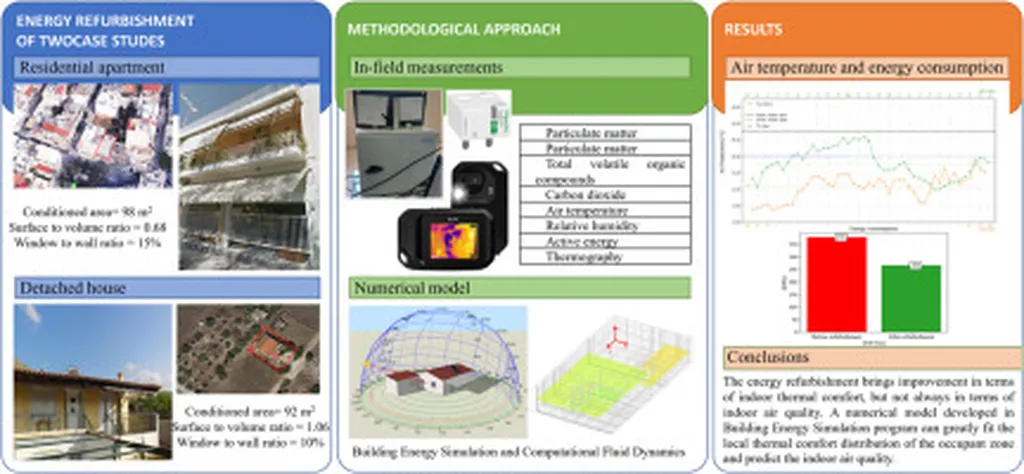In the quest to make buildings more sustainable, a recent study has shed light on how circular refurbishment measures can significantly impact indoor air quality and comfort, offering valuable insights for the energy sector. Led by Valentino Festa from the Department of Engineering at the University of Sannio in Italy, the research, published in the journal *Energy and Built Environment* (translated as *Energy and Built Environment*), focuses on the energy renovation of two real buildings in Greece, providing a practical case study for professionals in the field.
The study, part of the European project “Drive 0,” aimed to promote deep environmentally friendly retrofitting through circular renovation concepts. Festa and his team monitored a series of parameters describing energy use, microclimate, environmental conditions, and air quality before and after the energy requalification. Their findings reveal that refurbishing the heating system greatly improved indoor thermal conditions, although it sometimes led to higher concentrations of Total Volatile Organic Compounds (TVOCs), exceeding 3.0 mg/m3. “The refurbishment of the heating system showed a great improvement of indoor thermal conditions,” Festa noted, “but we also observed that TVOC concentrations sometimes exceeded recommended levels.”
Another key finding was that integrated thermal insulation reduced air infiltrations and changed the building envelope’s behavior, resulting in a global energy saving of 30% during winter and autumn periods. This is a significant achievement, as buildings are responsible for a substantial portion of natural resource consumption.
The study also demonstrated that a numerical model developed in a Building Energy Simulation program, when calibrated on energy consumption, can accurately predict indoor air quality and thermal comfort distribution. “The numerical model, when used as input data in a Computational Fluid Dynamics study, can greatly fit the local thermal comfort distribution of the occupant zone and predict indoor air quality,” Festa explained. This finding is particularly beneficial for decision-makers and designers evaluating emitter positioning, opening design, and mechanical ventilation strategies aimed at reducing energy costs.
The research highlights the importance of considering indoor environmental quality during building refurbishment and the value of combining in-field measurements with dynamic simulation models. As the construction sector strives to attain carbon neutrality, these findings offer practical strategies for improving energy efficiency and indoor comfort, ultimately shaping future developments in the field. The study’s insights can guide professionals in making informed decisions that balance energy savings, indoor air quality, and occupant comfort, paving the way for more sustainable and efficient buildings.

